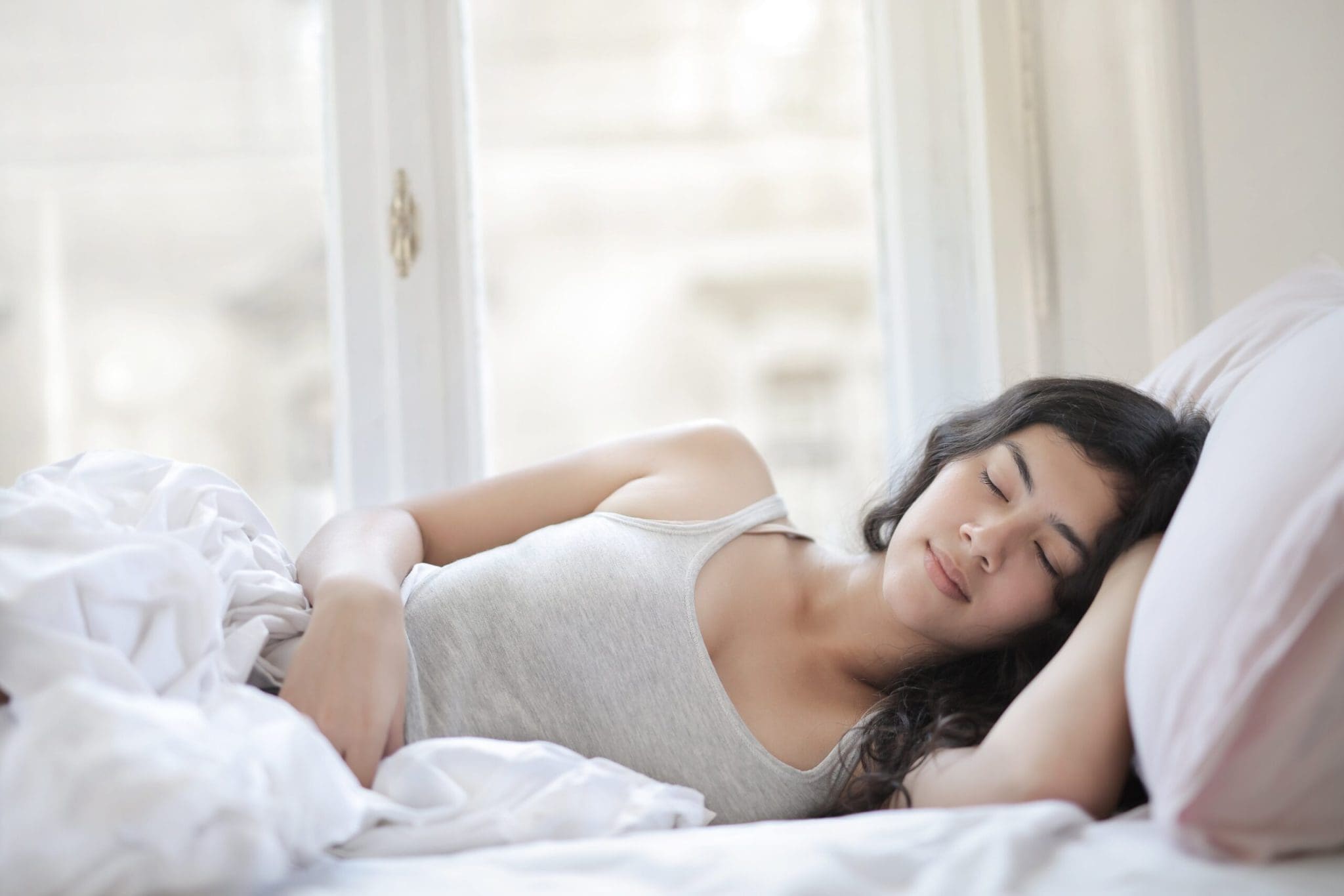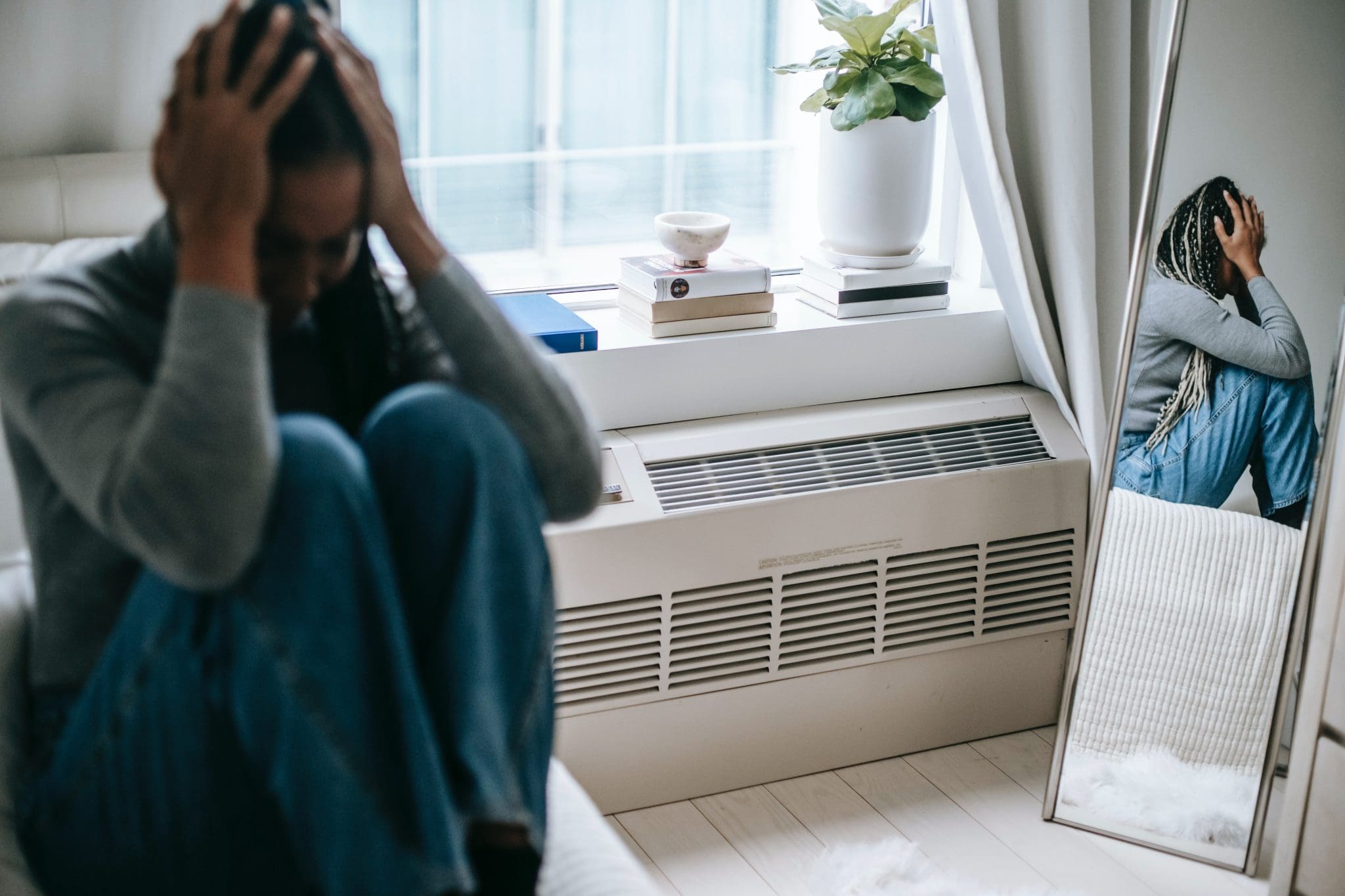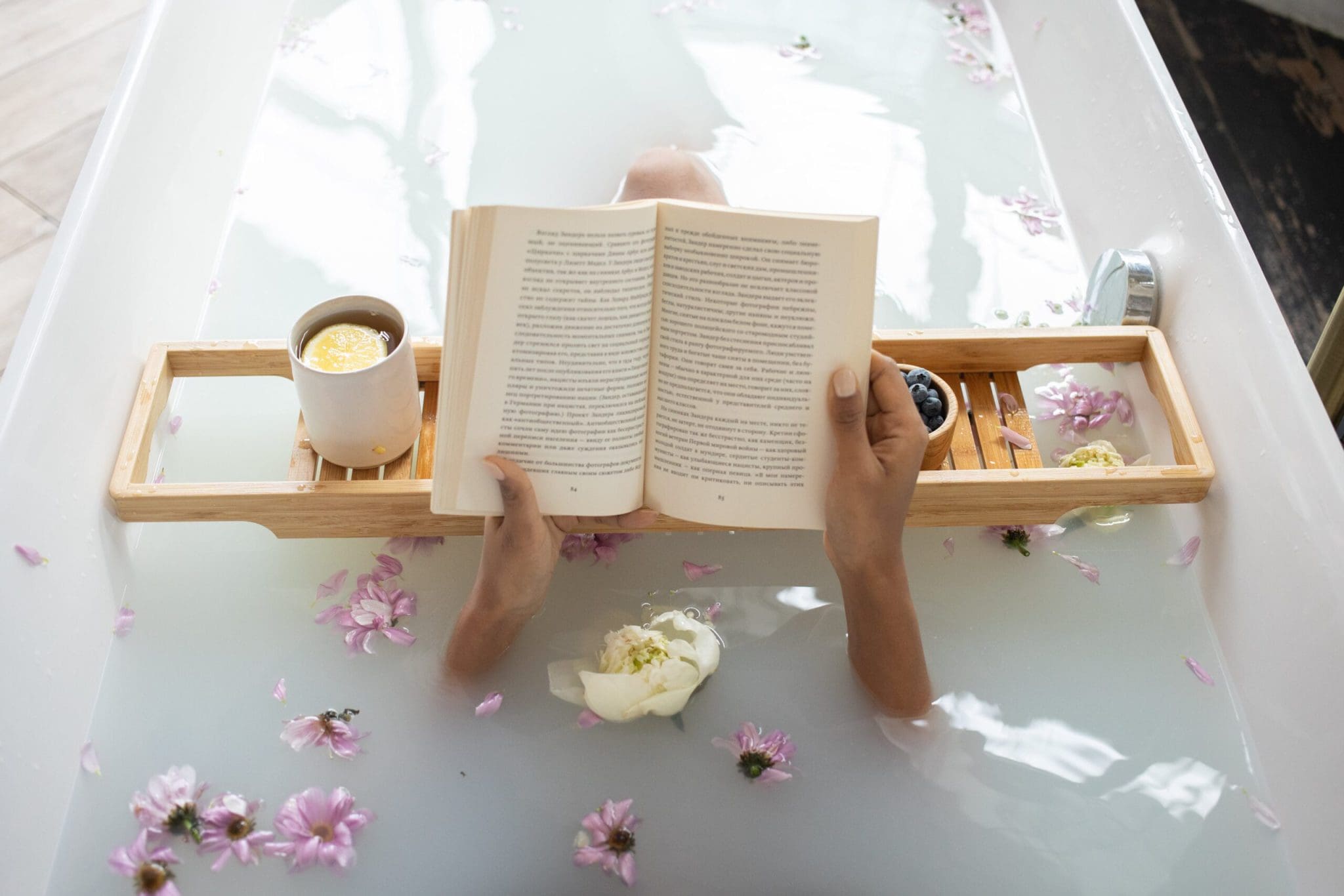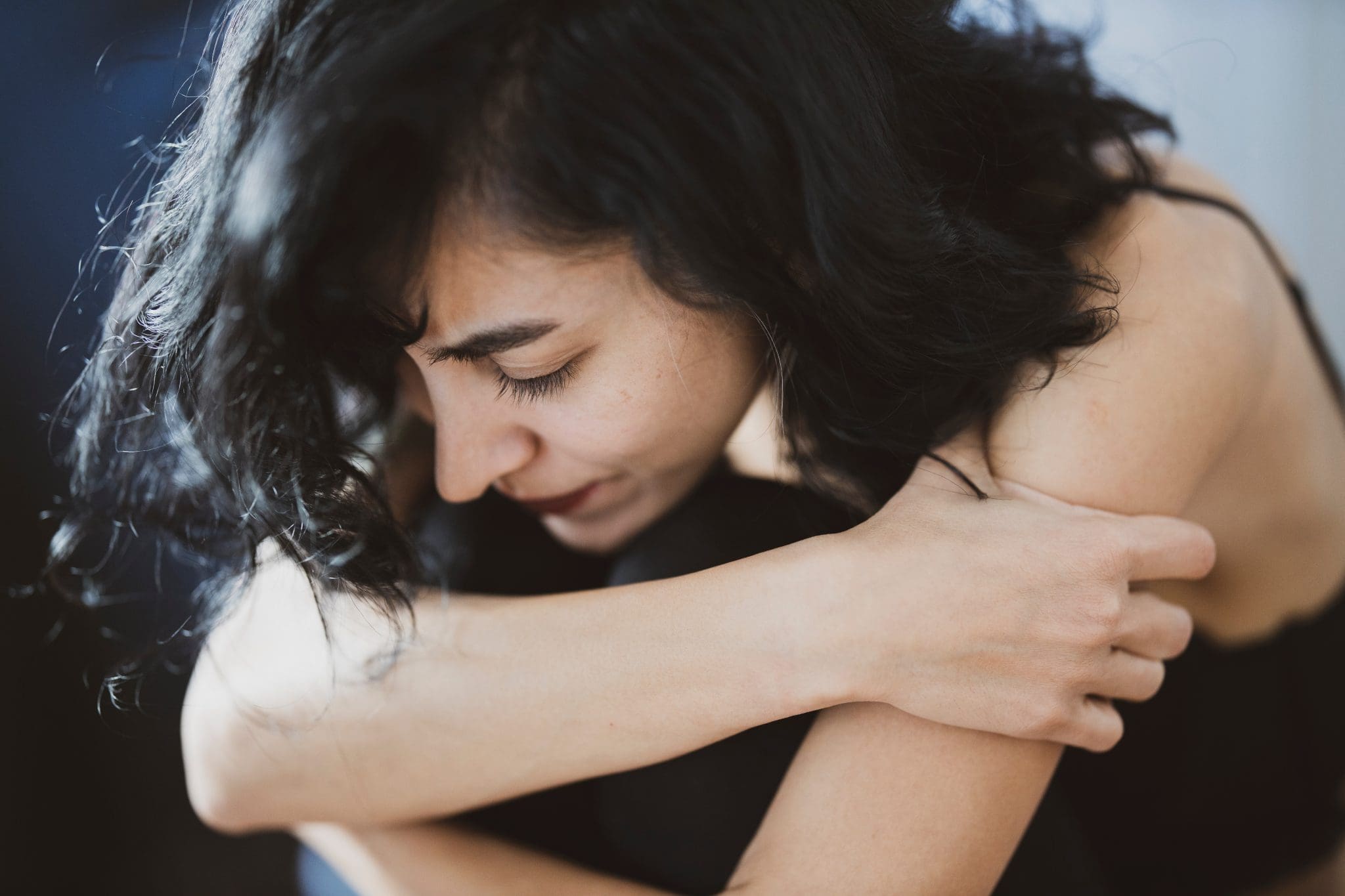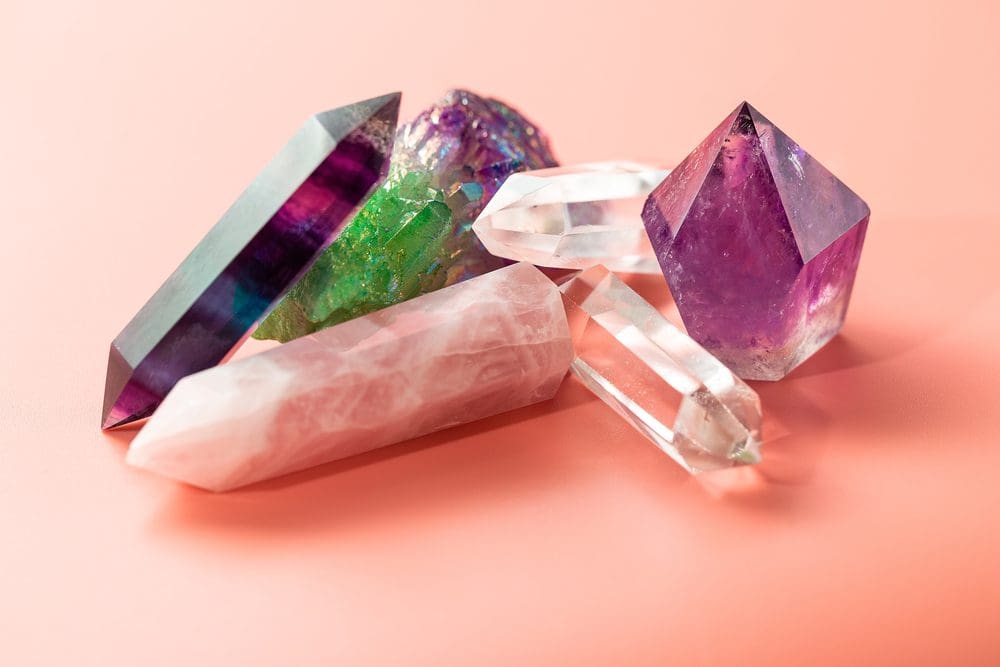Full Disclosure: Clicking on these links could mean a tiny commission for me, at no extra cost to you.
Anxiety is a natural response to stress, and in some cases, it can actually be helpful. For instance, it can serve as an early warning sign of potential dangers and prompt us to take necessary precautions. However, anxiety disorders go beyond the typical feelings of nervousness or unease and involve excessive and often irrational fears or worries. They are incredibly common, with nearly 30% of adults experiencing 5 types of anxiety at some point in their lives. The good news is there are many effective treatments for anxiety available, and most people can manage and even overcome their symptoms with the right support.
Advertisement
💚 Ready to Start Healing?
Therapy can change lives — and BetterHelp makes it easy. Get matched with one of 20,000+ licensed therapists and begin your journey from the comfort of home. Services start at just $65/week — no waiting rooms, no commute.
What is Anxiety?
Anxiety is a term used to describe the feeling of worry or apprehension about something that may happen in the future. This type of emotional response is often characterized by physical symptoms such as muscle tension and avoidance behavior, as individuals may try to avoid situations that trigger their anxiety.
On the other hand, fear is a reaction to an immediate threat or danger, prompting a fight or flight response in individuals. When faced with a fearful situation, individuals may either choose to confront the source of danger or try to escape from it.
While anxiety and fear may seem similar, they stem from different types of situations and trigger distinct responses in individuals. By understanding the differences between the two, along with the 5 types of anxiety, you can better recognize and manage your anxiety symptoms in various scenarios.
5 Types of Anxiety Disorders
It’s natural to experience occasional feelings of anxiety, but anxiety disorders are a distinct group of mental illnesses that can significantly impact a person’s daily life. These disorders are characterized by persistent and intense feelings of anxiety and fear that can be overwhelming and difficult to manage.
The effects of anxiety disorders can be far-reaching, causing individuals to avoid various aspects of their lives, such as work, school, social events, and other situations that may exacerbate their symptoms. This avoidance behavior can further compound the negative impact of anxiety disorders on a person’s well-being and quality of life.
It’s important to understand that anxiety disorders are treatable, and there are various effective interventions available.
1. Generalized Anxiety Disorder
Approximately, 6.8 million people in America are affected by Generalized Anxiety Disorder (GAD), a condition described as excessive worrying, tension or fear about everyday things that most people usually don’t usually experience a constant dread over, according to Anxiety and Depression Association of America. With these types of anxiety, there is no phobia or fear connected to a specific thing or situation. Instead, you typically experience continuous anxiety throughout the day. It may even feel like normal worrying but the difference is that GAD involves worrying that is:
- excessive
- intrusive
- persistent
- disruptive
It’s also very likely to co-exist with other different types of anxiety disorders. However, GAD is often less intense than a panic attack and instead, involves living with a constant fear or exaggerated worry, despite there being little to nothing to provoke it.
Common Triggers of Generalized Anxiety
The triggers for Generalized Anxiety Disorder can vary person to person. However, some common situations that are known to spark GAD include:
- Worrying about falling out of a moving vehicle when the car turns
- Seeing a normal thunderstorm and going into a panic about a tornado when your area never experiences tornadoes
- A text-message going unanswered makes you think your friend hates you
- Hearing people joke about the end of the world which makes you panic and prepare for an apocalypse
Symptoms of Generalized Anxiety Disorder
For someone who suffers from Generalized Anxiety Disorder, you likely find yourself worrying about things that can happen but that are highly unlikely. You may also experience the follow symptoms:
- Restlessness, edginess, or feeling wound-up
- Easily fatigued or tired
- Difficulty concentrating or focusing
- Irritability and easily agitated
- Experiencing physical symptoms like headaches, muscle aches, stomach aches, or unexplained pains
- Difficulty controlling feelings of worry
- Sleep problems, such as difficulty falling or staying asleep
2. Panic Disorder
Panic disorder is a type of anxiety disorder characterized by recurrent, sudden and unexpected episodes of intense panic or fear.Approximately 6 million Americans experience this type of anxiety, according to Anxiety and Depression Association of America.
The intense sensations of panic typically come out of nowhere, are entirely unexpected and completely debilitating. Despite only lasting a couple of seconds to 30 minutes, a panic attack can leave you feeling exhausted and unable to continue with your day. This often leads to fearing another panic attack in the future, which creates more anxiety and increases your chances the frequency in which you experience them.
The frequency of panic attacks can vary depending on the severity of your panic disorder. Some people may experience panic attacks once or twice a month, while others may have them multiple times per week.
Despite the intense and alarming nature of panic attacks, it’s important to note that they are not physically dangerous. Panic attacks do not typically cause any lasting harm to the body, and hospitalization is unlikely unless the individual experiences a complication or underlying medical condition.
Causes of Panic Disorder
Panic disorder can stem from a combination of factors, such as experiencing a traumatic or highly stressful life event, such as bereavement or a serious accident, having a family history of panic disorder, and an imbalance of neurotransmitters in the brain – which are chemical messengers that facilitate communication between brain cells. Different things may cause you to experience a rush of panic associated with a past experience and sometimes, they can seemingly come out of nowhere.
Symptoms of Panic Disorder
Panic attacks can occur abruptly, without warning, and in any situation – whether you are driving, shopping, sleeping, or attending a meeting. They can be sporadic, or happen more frequently. This can lead to one of the most challenging aspects of panic attacks, which is the fear of having another one. This fear can be so intense that it can cause people to avoid certain situations altogether, in an attempt to prevent future attacks from occurring.
While panic attacks can vary in intensity and duration, they usually peak within a few minutes, leaving the individual feeling fatigued and drained afterwards.
Some common symptoms of panic attacks include:
- Sense of impending danger or doom
- Fear of losing control or dying
- Rapid heart rate
- Sweating
- Trembling or shaking
- Shortness of breath or a tight sensation in the throat
- Chills
- Hot flashes
- Nausea
- Abdominal cramping
- Chest pain
- Headache
- Dizziness or lightheadedness
- Numbness or tingling sensations
- Feelings of unreality or detachment
3. Social Anxiety Disorder
Feeling nervous in some social situations is typically a normal experience. For example, going on a date or giving a presentation may cause that fluttering feeling in your stomach. However, social anxiety disorder, also known as social phobia, is different. It causes significant anxiety, self-consciousness, and embarrassment in everyday interactions due to fear of being negatively judged or scrutinized by others.
Social anxiety disorder can disrupt your life as fear and anxiety lead to avoidance of social situations. This can cause severe stress and affect your relationships, daily routines, work, school, or other activities.
While social anxiety disorder can be a chronic mental health condition, there are treatments available. Learning coping skills in psychotherapy and taking medications can help you gain confidence and improve your ability to interact with others.
Causes of Social Anxiety Disorder
The cause of social anxiety disorder different from the 5 types of anxiety mentioned. They also vary person to person and may be the result from a combination of physical, biological, and genetic factors. Problems with neurotransmitter systems may lead to imbalances in the hormones serotonin, dopamine, and glutamate (brain chemicals that help regulate mood) can also play a role. Some additional causes of social anxiety include:
- History of emotional, physical, or other kinds of abuse
- Negative interactions with peers
- Over controlling parenting style
- Having an insecure attachment style
- Negative experiences may lead to a type of post-traumatic stress disorder (PTSD), where social anxiety is a symptom.
- Family history of social anxiety
Symptoms of Social Anxiety Disorder
It’s common to feel shy or uncomfortable in certain social situations, which can vary based on personality traits and experiences, especially in children. However, social anxiety disorder is characterized by fear, anxiety, and avoidance that significantly impact daily life, relationships, work, and other activities.
Emotional and behavioral symptoms of social anxiety disorder may include:
- Fear of negative judgment in social situations
- Worry about embarrassing or humiliating yourself
- Intense fear of interacting with strangers
- Fear that others will notice your anxiety
- Avoidance of situations or people out of fear of embarrassment
- Anxiety or fear during social situations
- Self-analysis and identification of flaws after social situations
- Expectation of negative consequences from social situations
- For children, anxiety about interacting with adults or peers may be expressed through crying, temper tantrums, clinging, or refusing to speak.
Physical symptoms that may accompany social anxiety disorder include:
- Blushing
- Rapid heartbeat
- Trembling
- Sweating
- Upset stomach or nausea
- Shortness of breath
- Dizziness or lightheadedness
- Feeling of mental blankness
- Muscle tension
Social anxiety disorder can also make everyday experiences difficult to do, such as:
- Interacting with strangers
- Attending social gatherings
- Going to school or work
- Starting conversations
- Making eye contact
- Dating
- Entering a room with people already present
- Returning items to a store
- Eating in public
- Using public restrooms
Social anxiety disorder symptoms can change over time, and may worsen during periods of stress or change. Although avoiding anxiety-producing situations may offer short-term relief, treatment is crucial to address the underlying causes and prevent long-term consequences.
Advertisement
⚡ Access Treatment Right Now
→ Online Therapy – Talk to a licensed therapist today through BetterHelp. Affordable, private, and convenient therapy starting at $65/week. Take the Free Assessment to get matched now.
→ Digital Psychiatry – Connect with a provider in 12–48 hours via Hims/Hers. Explore FDA-approved medication options — no insurance required. Get Started Today.
4. Obsessive Compulsive Disorder (OCD)
Obsessive-compulsive disorder (OCD) is another one of the 5 types of anxiety disorders. It is characterized by persistent, unwanted thoughts, ideas, or sensations (obsessions) that drive individuals to perform repetitive behaviors (compulsions) in an attempt to alleviate the anxiety caused by their obsessions. These compulsions may include actions such as hand washing or cleaning, checking, counting, or other mental acts that can significantly disrupt a person’s daily routine and social interactions. According to Anxiety and Depression Association of America, 2.2 million americans suffer from Obsessive Compulsive Disorder.
While distressing thoughts or repetitive behaviors can occur in people without OCD, these typically do not interfere with their daily lives. For those with OCD, however, the thoughts are persistent and intrusive, and the behaviors are inflexible. Failing to perform the behaviors often leads to extreme distress, often accompanied by a specific fear of dire consequences for themselves or loved ones. Some people with OCD are aware that their obsessive thoughts are unrealistic, while others may believe they could be true. Despite this awareness, individuals with OCD struggle to disengage from the intrusive thoughts or cease the compulsive actions.
Causes of OCD
While distressing thoughts or repetitive behaviors can occur in people without OCD, these typically do not interfere with their daily lives. For those with OCD, however, the thoughts are persistent and intrusive, and the behaviors are inflexible. Failing to perform the behaviors often leads to extreme distress, often accompanied by a specific fear of dire consequences for themselves or loved ones. Some people with OCD are aware that their obsessive thoughts are unrealistic, while others may believe they could be true. Despite this awareness, individuals with OCD struggle to disengage from the intrusive thoughts or cease the compulsive actions.
Symptoms of OCD
Obsessive-compulsive disorder (OCD) involves recurrent and persistent thoughts, impulses, or images that cause distressing emotions such as anxiety, fear, or disgust. People with OCD often recognize that these thoughts are excessive or unreasonable but cannot resolve the distress caused by them through logic or reasoning. To ease the distress, individuals may engage in compulsive behaviors or mental acts, which are repetitive and rigid.
Examples of common obsessions include:
- Fear of contamination by people or the environment
- Disturbing sexual thoughts or images
- Religious, often blasphemous, thoughts or fears
Fear of perpetrating aggression or being harmed (self or loved ones) - Extreme worry something is not complete
- Extreme concern with order, symmetry, or precision
Examples of behaviours are:
- Excessive responses that are directly related to an obsession (such as excessive hand washing due to the fear of contamination)
- Actions that are completely unrelated to the obsession
5. Post Traumatic Stress Disorder (PTSD)
Post-traumatic stress disorder (PTSD) is one of the 5 types of anxiety conditions that can occur in individuals who have experienced a shocking, scary, or dangerous event. It is a natural response to feel afraid during and after a traumatic situation, as fear triggers many rapid changes in the body that are designed to protect against harm. Although most people will recover from initial symptoms naturally, some individuals may continue to experience problems and may be diagnosed with PTSD. Those who have PTSD may feel stressed or frightened, even when they are not in danger. According to Anxiety and Depression Association of America, 7.7 million Americans suffer from PTSD.
Causes of PTSD
PTSD can occur as a result of experiencing a highly stressful, frightening, or distressing event, or a traumatic experience over a prolonged period of time. The following are examples of events that can lead to PTSD:
- Experiencing serious accidents
- Being a victim of physical or sexual assault
- Suffering from abuse, including childhood or domestic abuse
- Being exposed to traumatic events at work, including remotely
- Facing serious health problems, such as being in intensive care
- Going through childbirth experiences, such as losing a baby
- Coping with the death of someone close to you
- Living through war and conflict
- Being subjected to torture
Symptoms of PTSD
The symptoms of PTSD may not show up until months or even years after the traumatic event. However, this type of anxiety disorder is identified by three primary types of symptoms:
- Re-experiencing the trauma through distressing recollections of the event, intrusive flashbacks, and nightmares.
- Emotional numbness and avoidance of places, people, and activities that remind the person of the trauma.
- Heightened arousal, such as difficulty sleeping and concentrating, feeling easily irritated and angered, and being constantly on guard.
Someone suffering with PTSD may also experience:
- Distressing recollections of the event, intrusive flashbacks, and nightmares can cause the person to re-experience the trauma.
- Emotional numbness and avoidance of places, people, and activities that remind the person of the trauma can occur.
- Heightened arousal, such as difficulty sleeping and concentrating, feeling easily irritated and angered, and being constantly on guard.
Less Common Types of Anxiety Disorders
There are other types of anxiety on top of the 5 types of anxiety mentioned here.These typically aren’t as common as the ones mentioned above, but that can be just as frightening and debilitating, such as:
- Specific phobias: experiencing an intense fear of a specific object or situation, causing avoidance of ordinary situations.
- Agoraphobia: having an intense fear of being in a place where escape or help may be difficult, leading to panic or anxiety.
- Health anxiety: experiencing excessive worries about being ill or getting ill, to the point where it interferes with their daily life. This condition is often linked to obsessive-compulsive disorder (OCD).
- Separation anxiety: feeling anxious or fearful when a loved one leaves, often associated with worrying that something bad may happen.
- Selective mutism: a type of social anxiety in which a child talks normally at home but doesn’t speak in public, like at school.
- Medication-induced anxiety disorder: triggered by certain medications or drugs, or withdrawal from them.
Treatments for The 5 Types of Anxiety
There are many effective types of treatment for each of the 5 types of anxiety that can help you manage symptoms of anxiety and improve your general health and wellness and quality of life.. These treatments often fall within the following categories, with some options consisting of a combination of each:
- Psychotherapy: Cognitive behavioral therapy (CBT) and exposure response prevention are used in this form of therapy to assist individuals in conquering anxiety.
- Healthy lifestyle techniques: Alternative methods such as mindfulness, yoga, self-care and stress-management strategies can also be used to treat anxiety.
- Medication: Antianxiety and antidepressant drugs are commonly prescribed by doctors to treat anxiety.
It is recommended to speak with a therapist or psychologist to learn tools and coping strategies to manage stress when it occurs. Our Mental Health Resources page can provide guidance on finding help in your area or you can sign up to speak with a therapist online.
Final Thoughts
Seeking treatment for anxiety disorders can make a world of difference in a person’s life, allowing them to lead normal, productive lives. With the help of a mental health professional and various therapies and medications, individuals with anxiety disorders can learn to manage their symptoms and regain control over their lives. Remember, seeking help is a sign of strength, and it’s never too late to start your journey towards healing and recovery.
Additional Resources
At Anxiety Gone, we believe in healing together. We’ve partnered with trusted wellness organizations to bring you the most effective tools, insights, and support. Some links may earn us a commission — always at no extra cost to you.
Join The Club
Connect with our private self-care community for daily support, exclusive tips, and inspiration. Join us today
Talk Therapy
Get matched with licensed therapists online through BetterHelp and begin your healing today. Start now
Hims/Hers
Receive personalized, affordable mental health care + medication from home — no insurance required. Learn more
Mental Health, Right to your Inbox
Subscribe to our newsletter for a place to rest your mental health and find ways to support your journey. Sign up
Emotional Freedom Technique
Tap your way to calm with scientifically backed stress relief. Our readers receive a 14-day free trial! Try EFT now
Mindfulness App
Access 2,000+ guided practices to support your mental health wherever you are + exclusive discount when you upgrade Try it
Online Breathwork
Experience calm and reset your nervous system with guided sessions and receive your first month free . Get started
Find a Helpline
If you need immediate support, visit our directory to find help near you. See helplines


